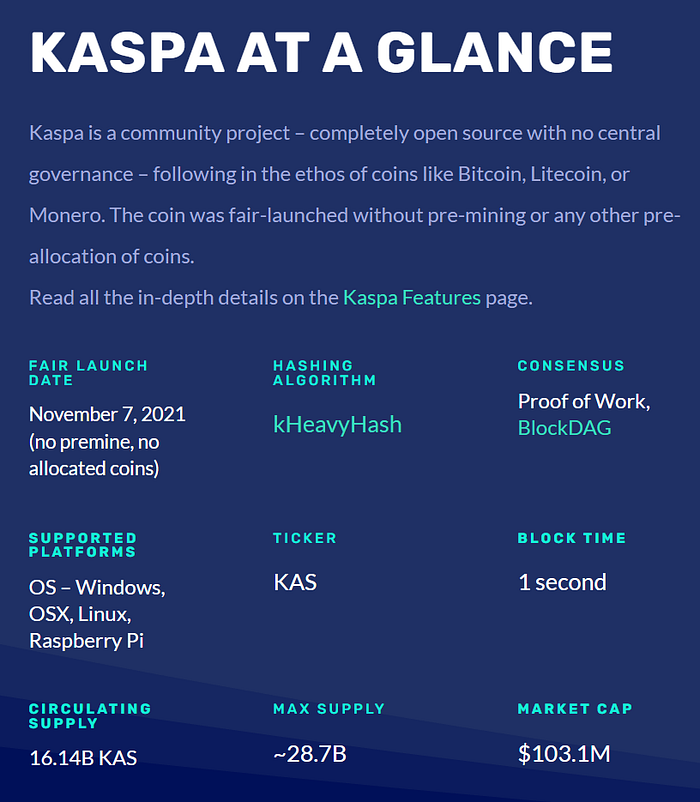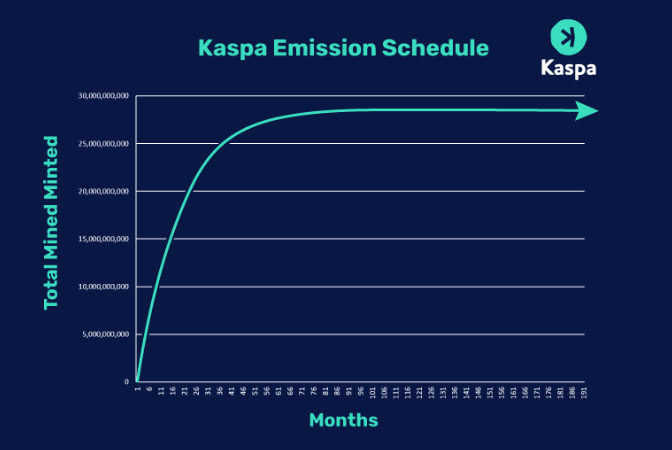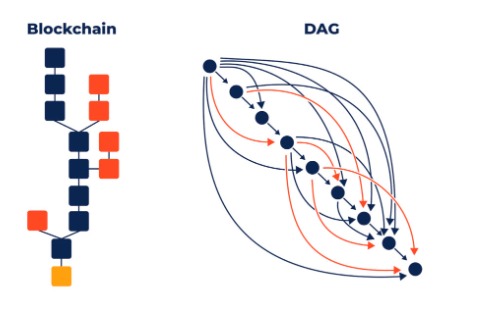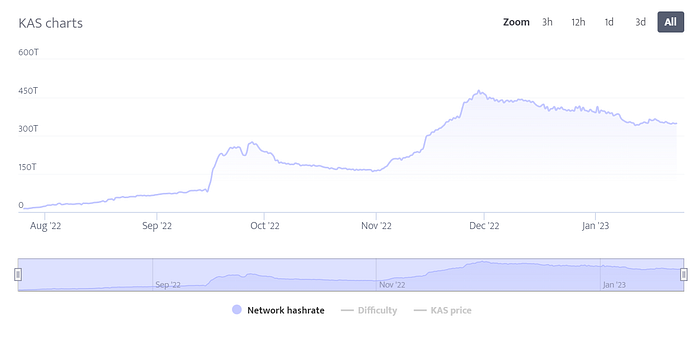Kaspa: The Solution to the Blockchain Trilemma and More

Kaspa, the Inception, Idea, and Solution
Launched November 7th, 2021, Kaspa ($KAS) came to life with the ultimate blockchain goal of solving the blockchain trilemma: to build a decentralized, fully scalable, and high-performing Layer-1. All while remaining open-source and operating as the fastest proof-of-work coin in the crypto ecosystem.
Where many blockchains sacrifice decentralization in pursuit of scalability and performance. Kaspa chose to embrace Proof of Work (PoW), community-based governance, and an open-sourced ethos. No KAS coins were ever pre-mined nor pre-sold and can only be obtained through mining. The Kaspa max supply is capped at 28.7 billion and at the time of writing this post, a circulating supply of 16 billion. The mining emission schedule halves once per year via smooth and stable monthly reductions by a factor of (1/2)^(1/12). Kaspa Emission Schedule
Kaspa Emission Schedule
DAG, Algorithm, and Mining
Kaspa mining is based on kHeavyHash, a modified form of the “optical-miner” ready HeavyHash algorithm. kHeavyhash utilizes matrix multiplication that is framed into 2 keccacs. kHeavyHash is energy efficient, core dominant, and can be successfully mined by GPU, FPGAs, and future specialized mining equipment.
Along with the energy efficiency of kHeavyHash, Kaspa boosts its carbon offset by implementing the GHOSTDAG protocol. Where traditional blockchains spend resources on orphaned blocks, GHOSTDAG allows these blocks to coexist and factors them into consensus as a blockDAG (see image below). This ensures computational efficiency and full utilization of power. As a result, the operation allows high block rates (currently one block per second, aiming for 32/sec, with visions of 100/sec) and minuscule confirmation times often dictated by internet latency. The GhostDAG protocol enables block parallelism and connects honest nodes by sorting with greedy algorithms, facilitating real-time transaction confirmation and enhancing network security. Additionally, fast block production will help miners generate more blocks, discouraging them from joining a pool and helping decentralize Kaspa’s hashrates.
GHOSTDAG paper
You can view GHOSTDAG in real-time here: blockDAG visualizer
Not going to lie, it’s rather fascinating to watch a blockchain live and breathe. Blockchain vs DAG — Orange blocks are the orphans
Blockchain vs DAG — Orange blocks are the orphans Actual image from Kaspa’s blockDag visualizer
Actual image from Kaspa’s blockDag visualizer
Kaspa hashrates have steadily maintained above 300TH/s, over 1/3 of the ETH hashrates before the Merge, according to data from minerstat. As a result, Kaspa now ranks among the top coins for GPU mining by hashrate and is followed by the infamous ETC, whose hashrates only stand around 120 TH/s. The massive hashrates also indicate that the miner community is confident in the future value of KAS. At the time of writing, Kaspa was third for Trending coins and eighth for Top rated coins on minerstat.com Network hashrate from minerstat.com
Network hashrate from minerstat.com Coins page from minerstat.com
Coins page from minerstat.com
Kaspa, Decentralization, and the Community
Kaspa’s ambition goes far beyond a public chain for mining. The community is actively expanding the everyday use cases of KAS. The chain’s developers are also switching Kaspa’s programming language to Rust (ETA February 2023) to boost its performance and efficiency, attracting developers focusing on Layer2 smart contracts and DeFi.
Thanks to its commitment to idealism and the genius of its team, Kaspa has quickly stood out from the many PoW coins that support GPU mining, which aroused high expectations. As a result, Kaspa is positioned to start a new era dominated by genuinely decentralized and community-driven public chains as a leading PoW and DAG chain.




































